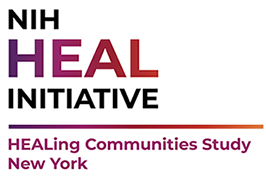Directions — Adjust sliders to view projected effect of increasing naloxone and MOUD on opioid overdose death.
Sliders — Above the slider are the intervention values at baseline and modeled scenarios. Below the slider are the corresponding percentages.
Key information — Results reflect assumptions of baseline Naloxone availability from 2020, and MOUD initiation and 6-month retention from 2019.
Projection Definitions:
Status Quo - Projections of the status quo are generated given that rates of all parameters remain at baseline (level of last year of data collection). The projected reduction in fatal overdoses compares intervention results to status quo results.
Intervention - Projections of interventions are generated given increases in the three intervention scenarios.
Assumptions:
These results reflect the assumption that the following is true of Proxy County:
Naloxone Availability — The baseline rate of naloxone availability is 1,100/100,000. Meaning there were 1,100 naloxone kits dispensed by pharmacies or distributed through the state per 100,000 residents in 2020.
MOUD Initiation — The baseline rate of initiation of 600/100,000. Meaning there were 600 new MOUD uses or uses after not using for at least 12 weeks for every 100,000 Proxy residents in 2019.
MOUD Retention — The baseline six-month retention is 60%. Meaning among people who took buprenorphine or naltrexone in 2019, 60% used it at least once every other week for 6 months straight.
